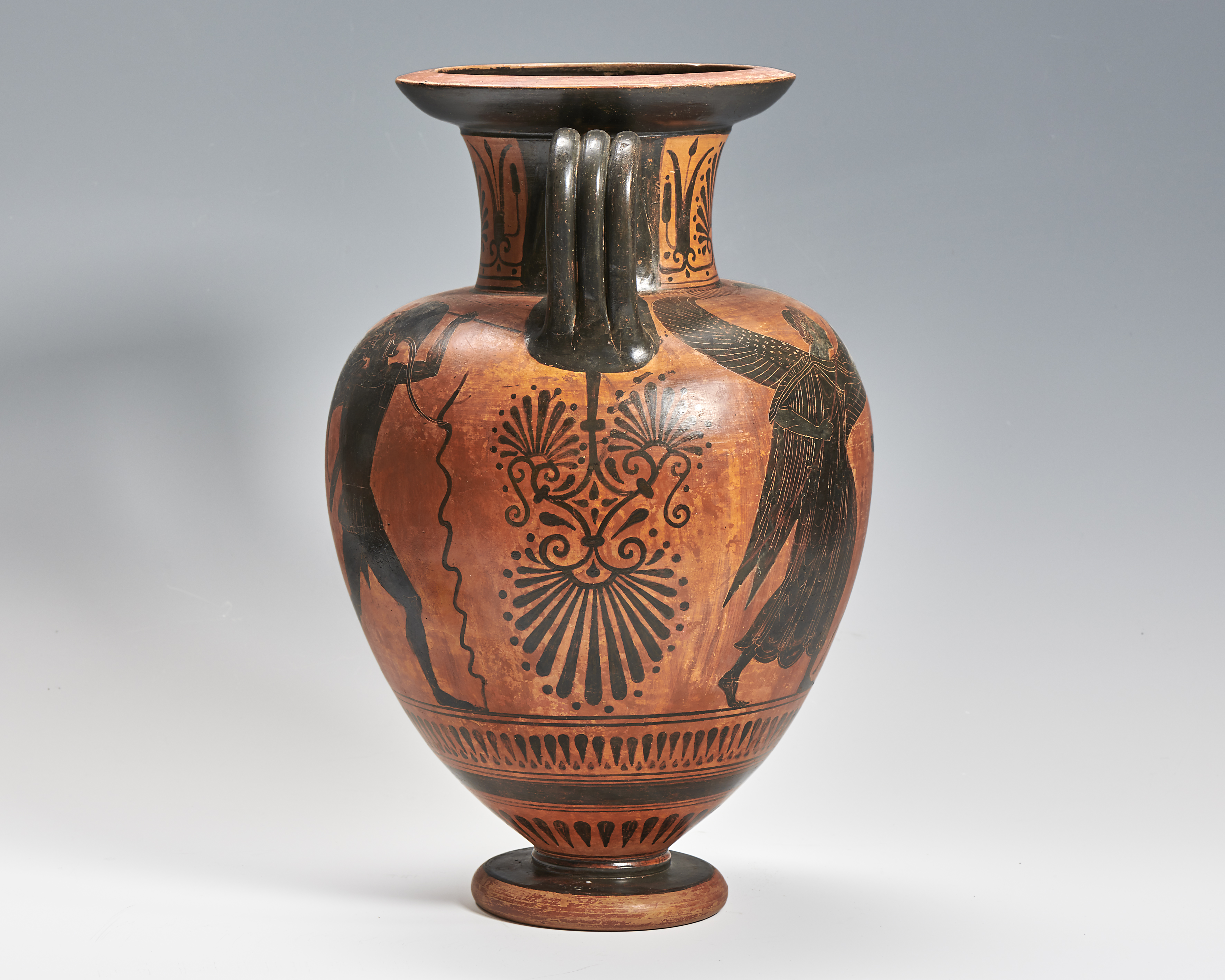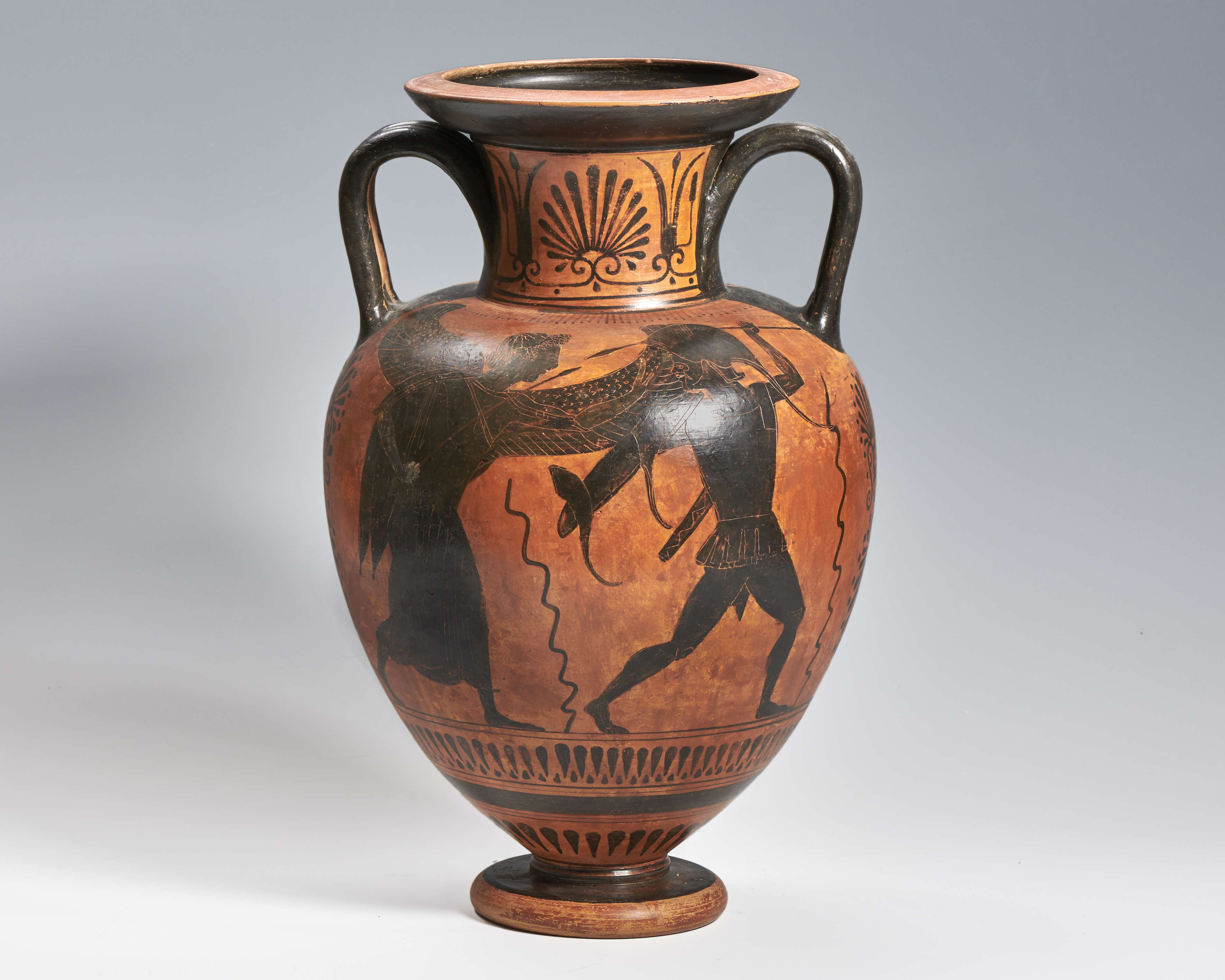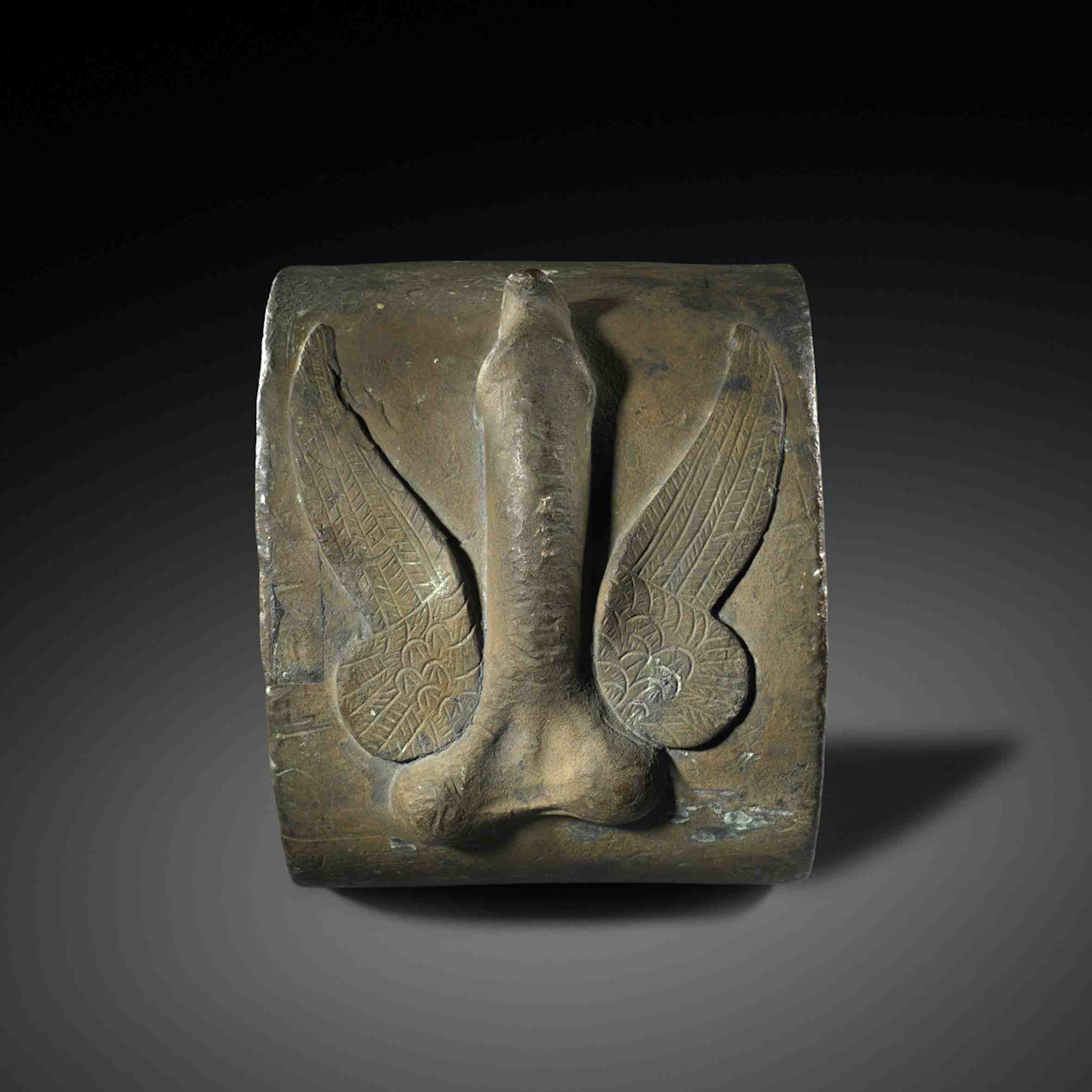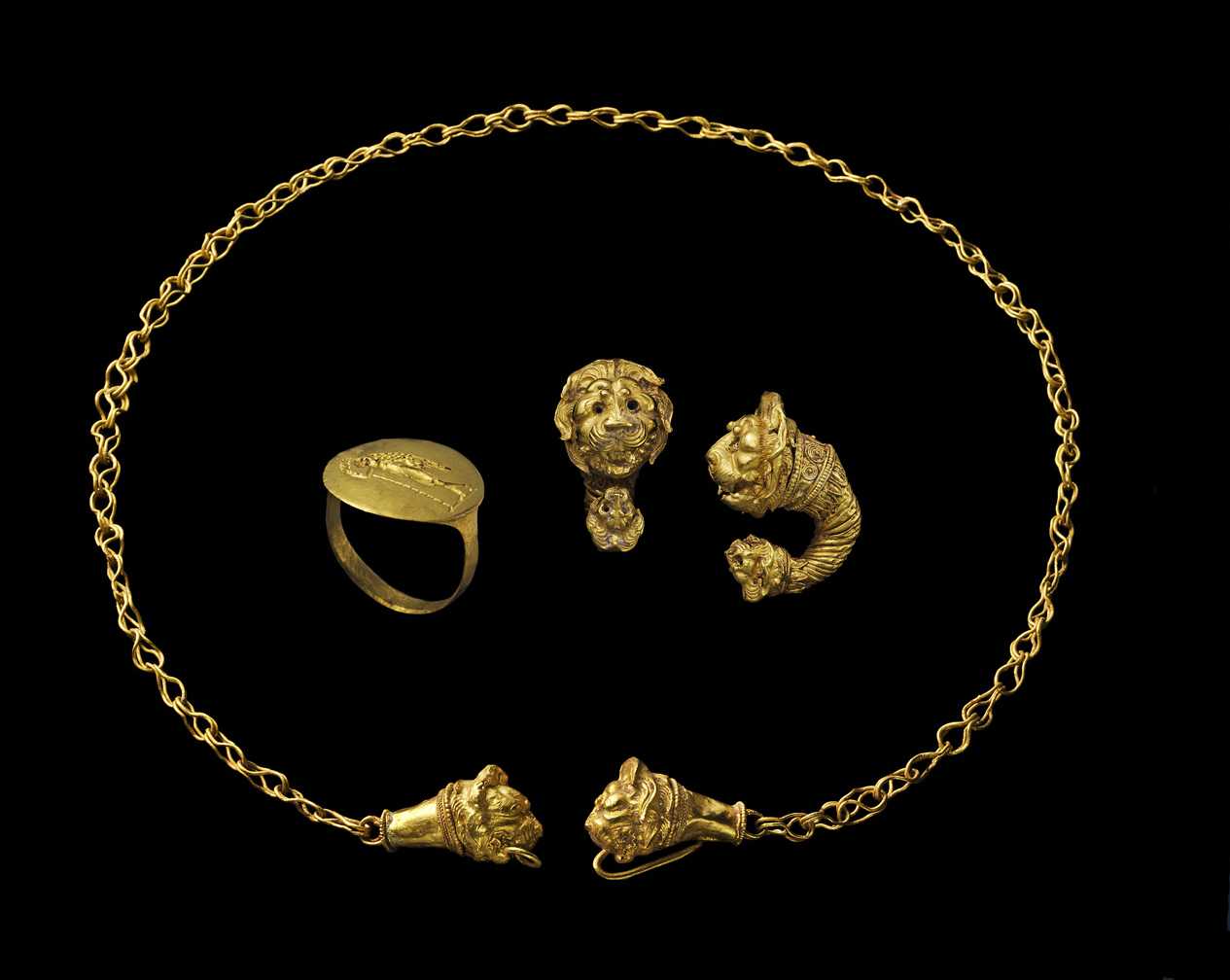This excellent Etruscan neck amphora is decorated with a fairly exceptional scene: side A shows a winged goddess advancing to the right. She wears a chlamys over her long chiton and holds a spear in her lowered right hand, while her left is outstretched towards the warrior in front of her. He is wearing his full armour, consisting of a short pleated chiton below a corselet with pteruges and a Chalcidian helmet with cheek-guards. In his raised left hand he wields a spear, in the right he holds a circular shield, as well as a scabbard with a sword on his back.
Side B illustrates the same winged goddess in a similar position. In front of her, a female figure wrapped in a heavy mantle moves to the left. She holds an offering in her outstretched right hand and a ribbon in her left hand, another one hangs from her right forearm. An animal, perhaps a dog or a deer, moves with her.
A palmette between two lotus buds adorns the neck and two bands of vertical, upside down drop shapes decorate the lower body. A complex flower motif consisting of opposing palmettes and volutes decorates the space below the handles.
The iconography of this outstanding, high quality Etruscan black figure amphora is certainly of mythological nature. However, the question arises of who might represent the winged goddess. At first sight, one thinks of Vanth, the Etruscan goddess of the underworld, coming to claim the other figures’ souls. However, representations of Vanth are not known in Etruria prior to the 4th century BC, and so perhaps the Greek goddess Nike is depicted on the vase. On the other hand, the wavy lines on side A could represent two serpents, a chthonic motif often accompanying Vanth, and therefore the scene could be an early depiction of Vanth on Etruscan black figure vases. Rest of white pigment for the skin.
Note
Since the late 9th century BC, South Italian pottery such as impasto ceramics is traditionally decorated with carving, usually of geometric or Orientalizing motifs. During this period, new shapes were adopted from the Greek mainland, although the workshops continued to produce the traditional biconical urn. From the 7th century BC onwards, new types of decoration, such as heron and fish motifs, were added to the local pottery production centres of Caere and Veii. Later, they begin to use felines and sphinxes in their decorations, as well as centaurs which are clearly adopted from the Greek iconology. From the mid-7th to the mid-6th century BC, production also includes silhouette figures painted on a glazed clay base. The evolving types of decoration allowed the identification of individual painters’ styles, and this evolution marks the conception of mythological and quotidian scenes in Etruscan vase decoration. In this formative phase, the vases were generally glazed with silhouettes outlined by incision, sometimes with added white, red, yellow or purple. At the same time until around the mid 6th century BC, we see the emergence of the black-figure technique and the predominance of the amphora shape.









